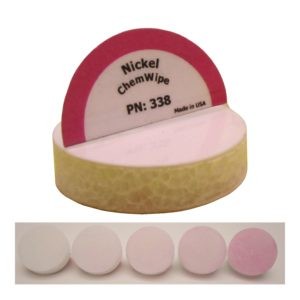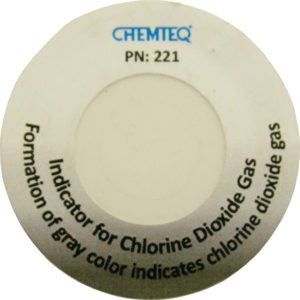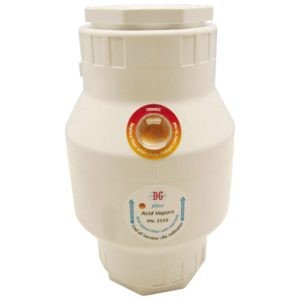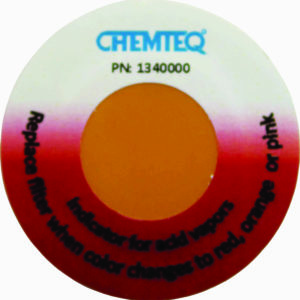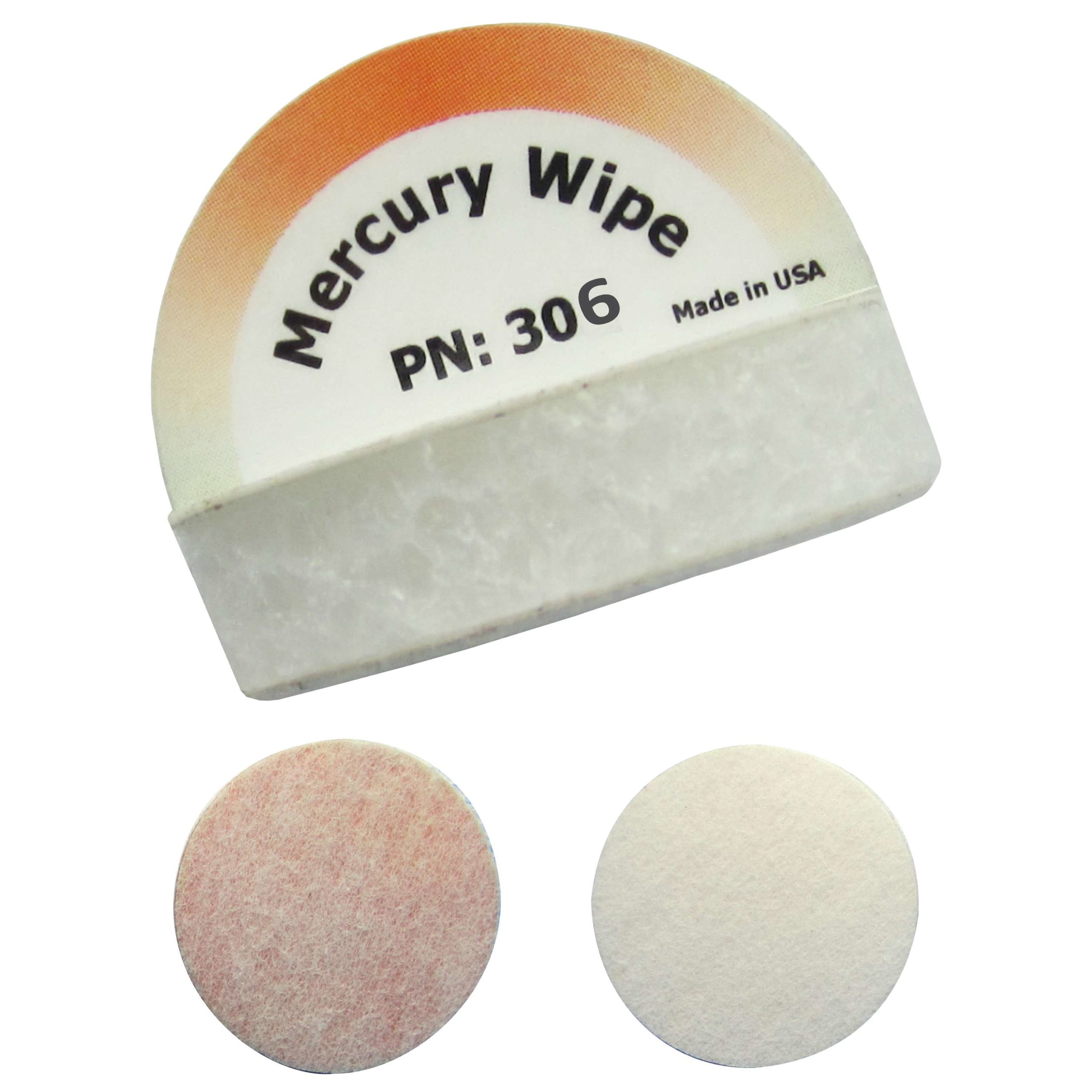
Mercury & Mercury II ChemWipe for Surface Contamination Testing
Detects and quantify mercury and mercury II compounds on surfaces
Item No. 306
Product Features
Minimum detectable limit: 2µg in 1 minute
Detection range using color comparator: 2 to 250 µg
Color Change: off white to peach
Dimensions: 8.5mm (0.33in), Φ: 31.8mm (1.25in)
Shelf life: 12 months
(Pack of 5)
$75.50
Mercury ChemWipe surface contamination testing (PN: 306) is a colorimetric surface wipe designed to provide real-time indication of the presence of trace amounts of mercury and mercury II compounds on surfaces. The Mercury ChemWipe is selective and sensitive. The unique design of the ChemWipe provides uniform color change formation enabling user to quantify chemical contamination using the color comparator.
Product Specifications
a | Weight: | 0.5g (0.02oz) |
b | Dimensions: | 8.5mm (0.33in), Φ: 32mm (1¼” in) |
c | Operating temperature: | 4oC to 60oC (39oF to 140oF) |
d | Operating humidity: | 5% RH to 95%RH |
e | Minimum detectable limit: | 2μg in 5 minutes |
f | Detection range using color comparator: | 2 to 250 μg |
g | Color change: | Off white to peach |
h | Storage temperature: | 4oC to 25oC, (39oF to 77oF) |
i | Shelf life: | 2 years at 4oC to 25oC, (39oF to 77oF) |
j | Maximum shipping temperature: | 45oC (113oF) |
k | Maximum shipping time @ max temp: | 4 days |
Useful Links
CDC
Facts About Mercury and Mercury II Compounds
Related Products
Nickel II Compounds ChemWipe
Facts About Mercury
Mercury is naturally occurring and exists in several forms. High mercury exposure results in permanent nervous system and kidney damage. Mercury is commonly found in thermometers, manometers, barometers, gauges, valves, switches, batteries, and high-intensity discharge (HID) lamps. It is also used in amalgams for dentistry, preservatives, heat transfer technology, pigments, catalysts, and lubricating oils.
Mercury ChemWipe surface contamination testing
Related products
- (Pack of 5)
Nickel II Compounds ChemWipe for Surface Contamination Testing
$76.30 - (Pack of 5)
Chlorine Dioxide Area Monitor
$196.00 Acids DG FILTER-ESLI-2510
$723.50- (Pack of 5)
Acids Filter Breakthrough-Indicator Sticker – BTIS
$91.87

